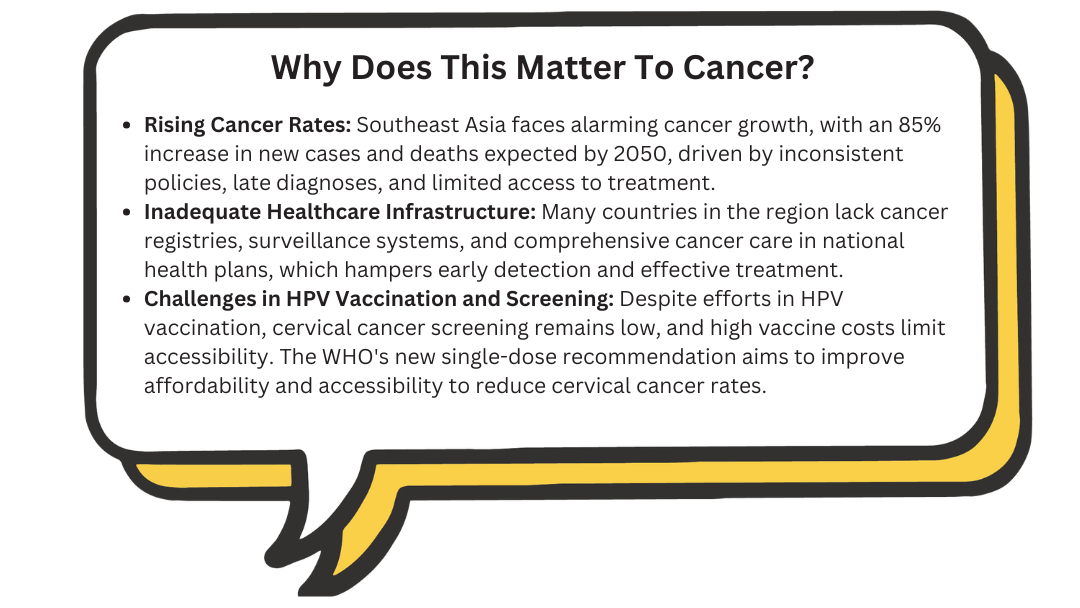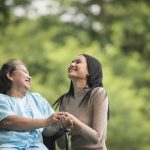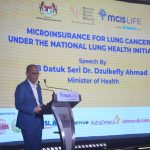Inconsistent national policies, late diagnoses and limited access to cancer are linked to an increase in cancer among Southeast Asians. The World Health Organization (WHO) estimates an 85% increase in new cases and deaths in the region by 2050.
In a statement released for World Cancer Day, the WHO highlighted that Southeast Asia has the highest rates globally for lip and oral cavity cancers, cervical cancer, and childhood cancers. The region saw 2.4 million new cancer cases and 1.5 million deaths in 2022 alone.
The WHO reports that only six countries in the region include cancer services in national health benefit packages, and palliative care remains inadequate. Many countries also lack cancer registries and surveillance systems, which hinders the development of data-driven interventions.
Despite HPV vaccination efforts in eight countries, including Malaysia, cervical cancer screening coverage remains low. Seven of these countries report rates below 50%, falling short of the 70% target for elimination. Effective HPV vaccination programs are crucial for reducing cervical cancer rates.
In 2022, the WHO revised its recommendations for HPV vaccinations, indicating that girls aged 9 to 14 now require only a single dose instead of two to three doses as previously recommended. However, the cost of HPV vaccines remains high compared to other vaccines, and this reduction in required doses could improve affordability and accessibility, particularly in low—and middle-income countries.
To address this, the WHO has collaborated with countries in the region and various partners to develop the WHO Southeast Asia Regional Strategy for Comprehensive Cancer Prevention and Management 2024-2030. This strategy emphasises a people-centred approach, shifting the focus from purely clinical outcomes to the lived experience of patients and caregivers.
Additionally, the Organisation will strengthen its partnerships with communities, civil societies, the private sector and other stakeholders. It is only with joint effort led by governments, supported by WHO and partners, and through collaboration that we will be better equipped to tackle the rising cancer burden.






